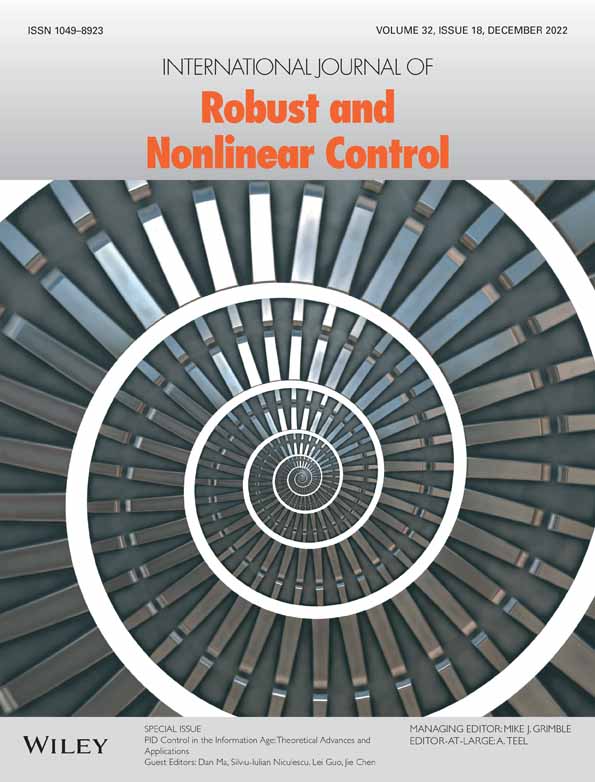Robust adaptive fault-tolerant proportional-derivative tracking control for six-degrees of freedom unmanned aerial vehicles
Funding information: Zhejiang Laboratory, 2019NB0AB06; National Natural Science Foundation of China, 61833013; 61773081; 61860206008; 61933012
Abstract
This article presents a robust adaptive control scheme for six-degrees of freedom (DOF) unmanned aerial vehicles (UAVs) in the presence of modeling uncertainties and actuation faults. The proposed control is in proportional-derivative (PD) form, and is able to tolerate actuation faults yet ensure stability and transient performance without the need for the detail model information of UAV. Furthermore, the PD control scheme exploited adaptively self-tuning PD gains, which avoids the ad-hoc and time-consuming trial and error process for gain determination as commonly required in traditional PD control, thus is design-friendly and low-cost, rendering the control algorithms easy and straightforward for programming and implementation. Both theoretical analysis and numerical simulation validate the effectiveness of the proposed control method.
CONFLICT OF INTEREST
The authors declare no potential conflict of interest.
Open Research
DATA AVAILABILITY STATEMENT
The data that support the findings of this study are available from corresponding author upon reasonable request.



 control structure for a quadrotor helicopter
control structure for a quadrotor helicopter
